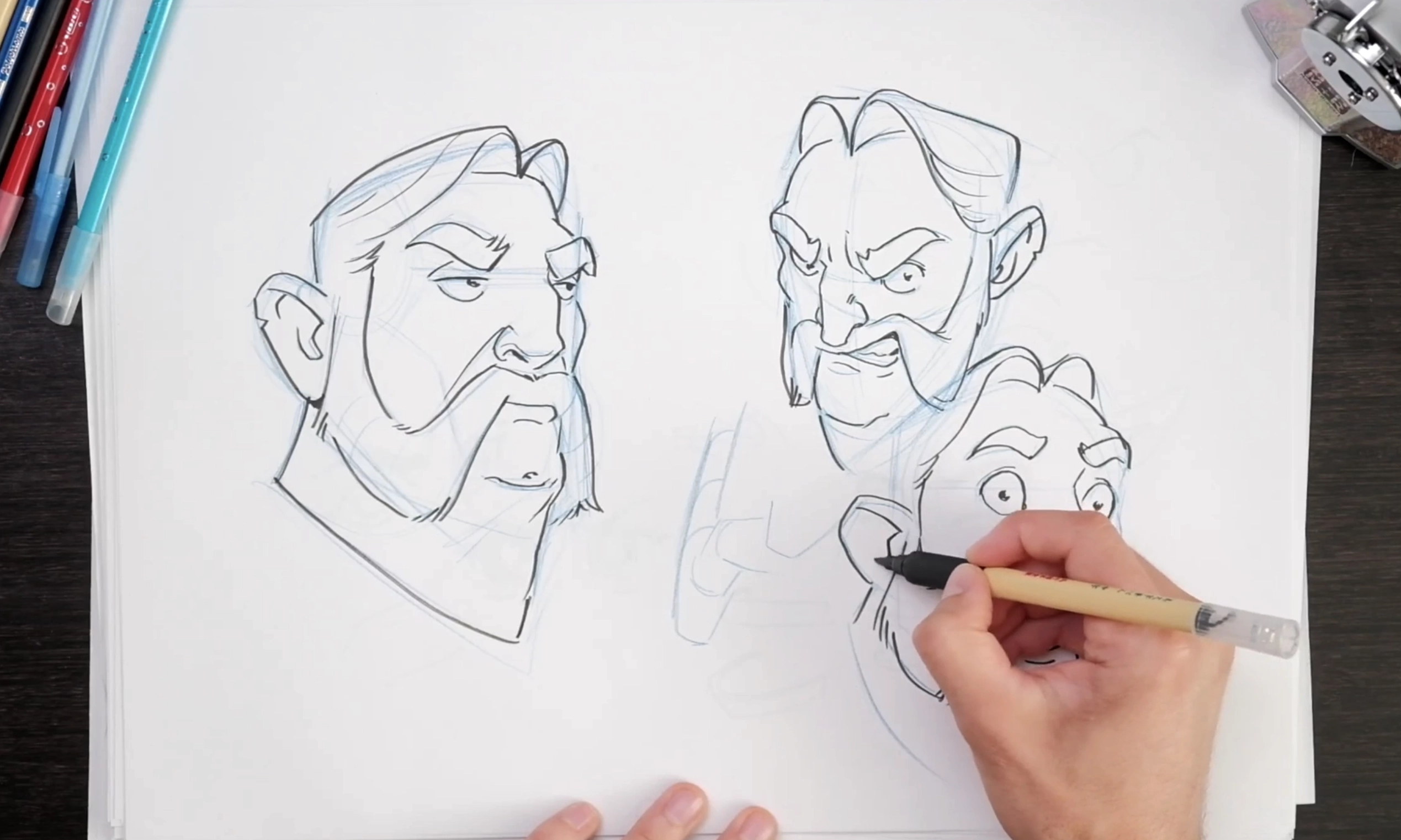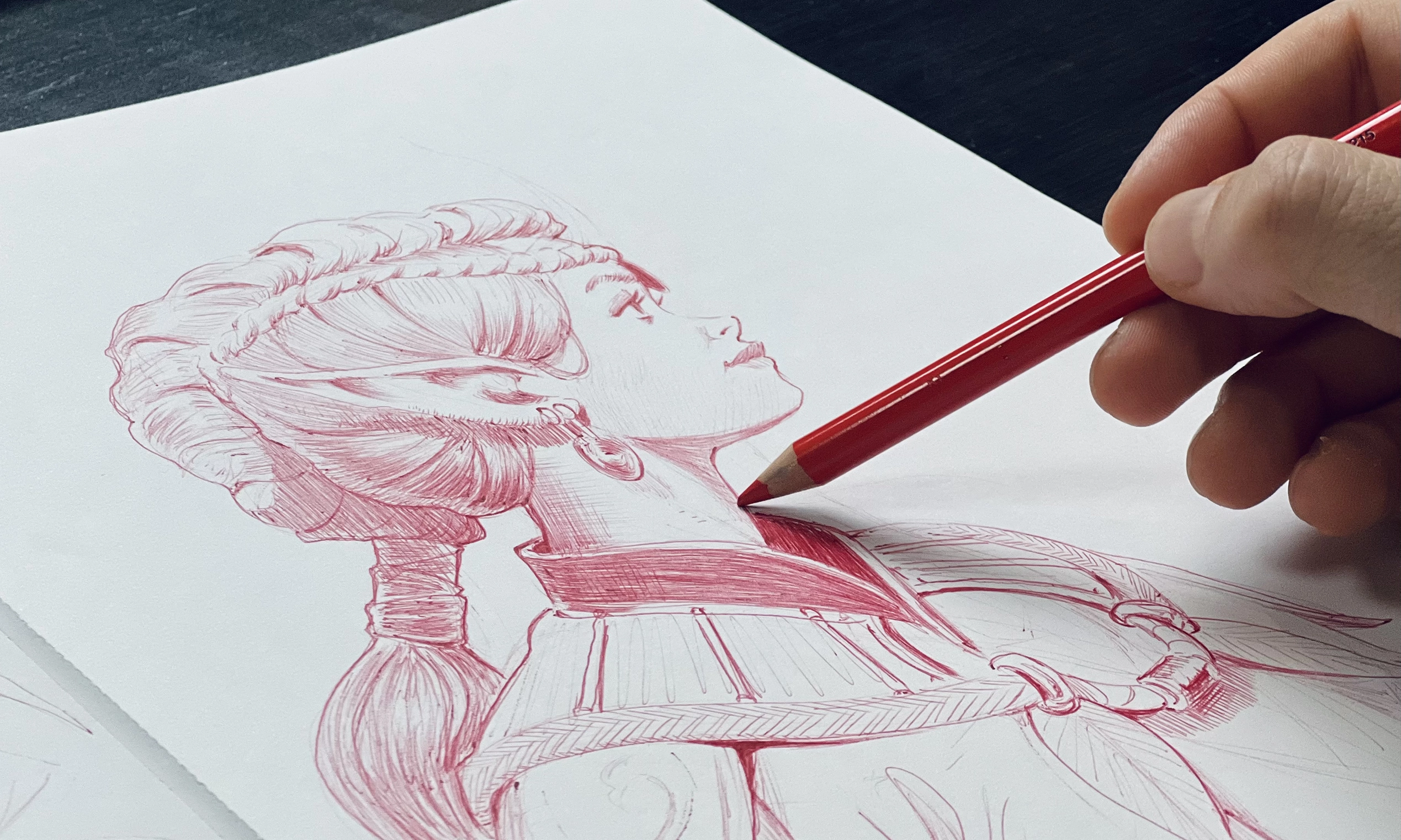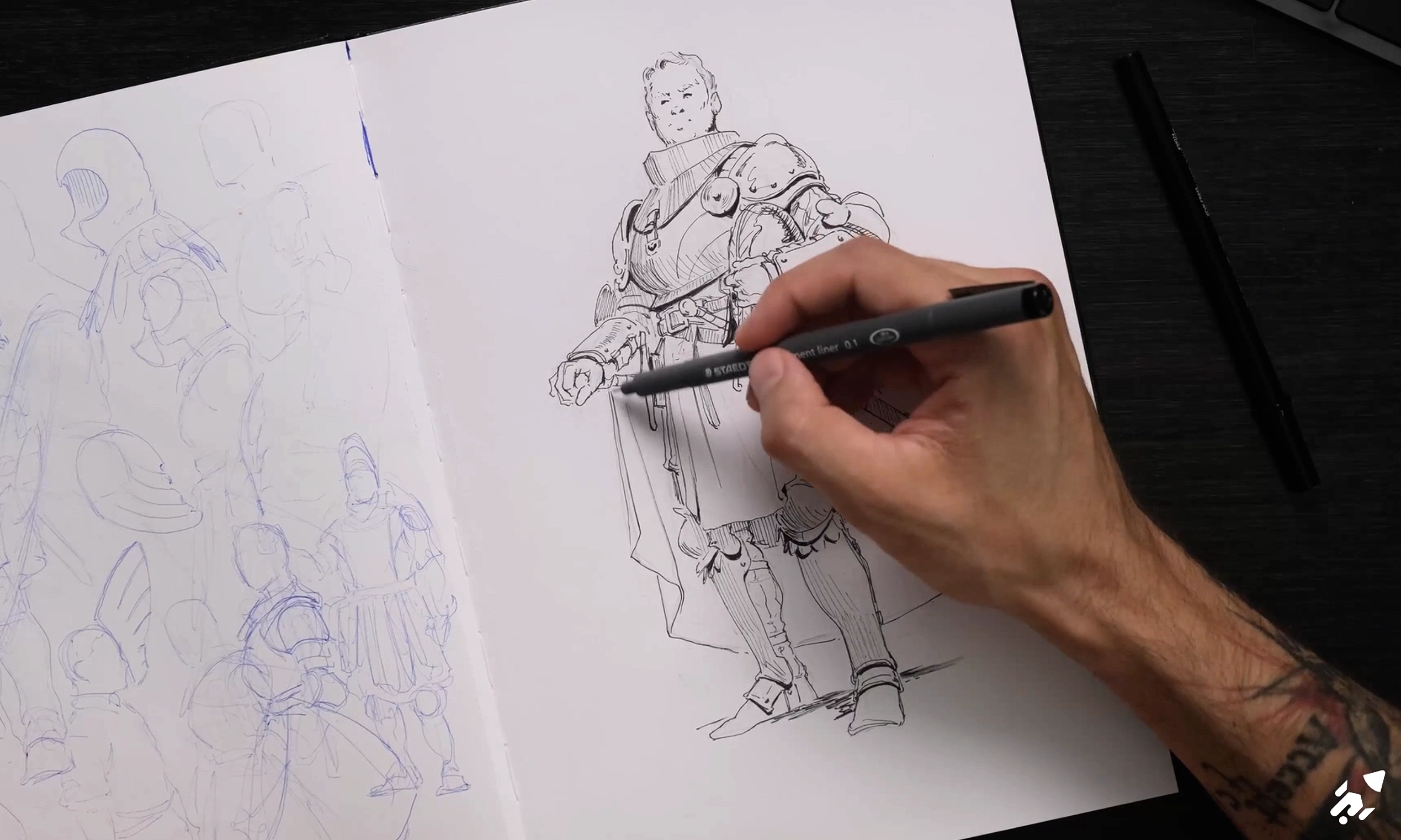
6 Steps to Draw Anything
6 Steps to Draw Anything
Hi there! I’m Antonio Stappaerts, a professional concept artist and teacher, and I want to share with you my proven method for learning how to draw anything. Trust me, it’ll give you a deeper understanding of form, design, and structure—and a lot less frustration along the way.
If you’ve ever struggled to capture the world around you—or bring your imagination to life—and felt like your artwork just isn’t meeting your expectations, this series is for you. I’ll walk you through my six-step process, and by the end, you’ll be equipped to tackle anything you want to draw.
In this six-part series, we’re going to break down complex subjects into simple shapes, master the art of shape design, and explore some tips and tricks to make those shapes more dynamic and interesting. Sound good? Great, let’s dive in.
Step 1: Structuralization
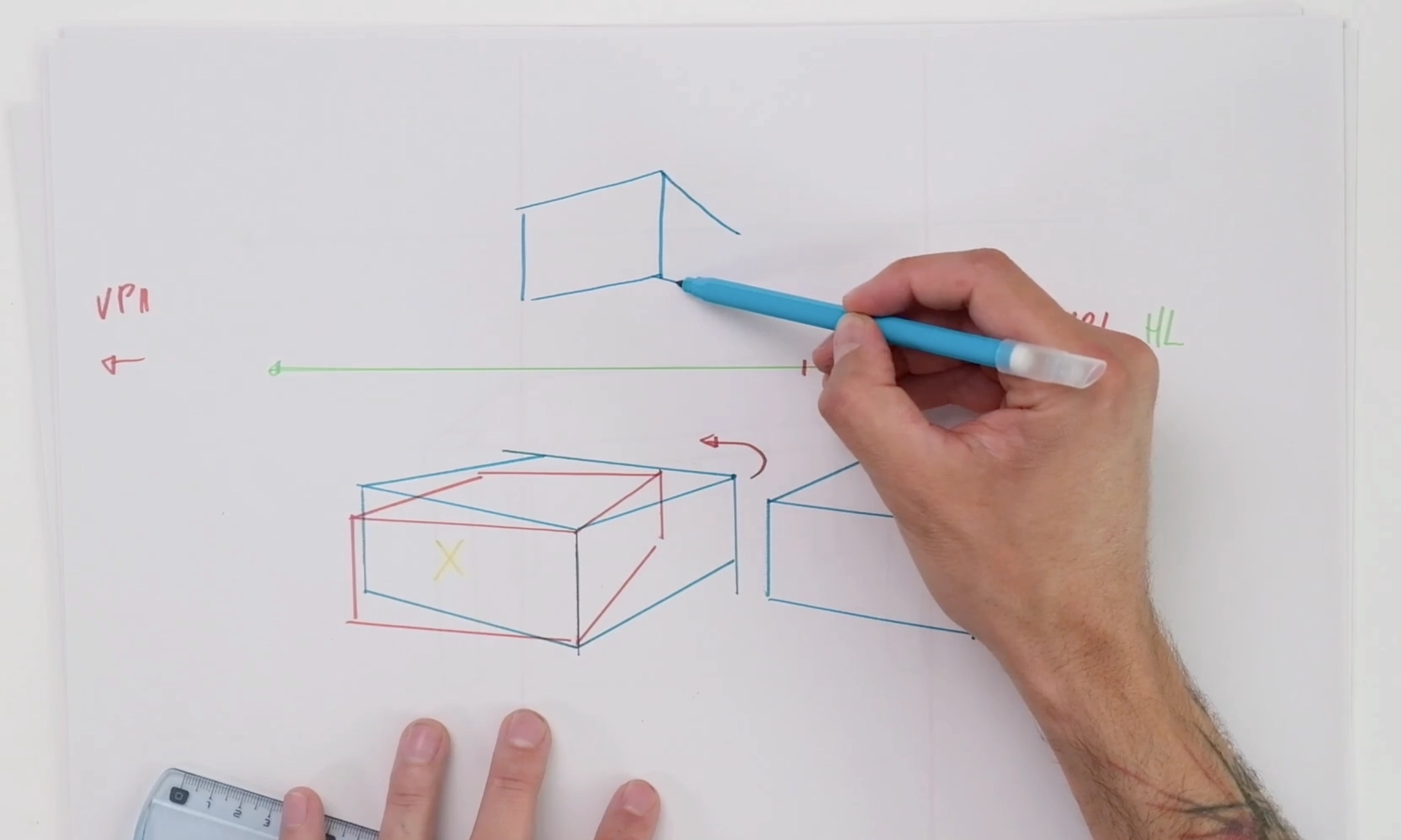
Drawing boxes in space is your first step to understanding perspective.
This is the foundation of mastering shape design and starts with learning to draw simple shapes like boxes, spheres, cylinders, and cones in perspective.
By understanding simple form in perspective, we are taking the first, and might I say most fundamental, step into the world of imaginary drawing. You see, simple forms are all around us; they just appear complex by the manipulations applied to them (see step 2).
A figure, a car, your phone, your coffee machine, your house plants, ANYTHING can be broken down into these simple forms. The trick is to learn to see these forms in their simplicity (you must learn to see the matrix).
Want to draw a dragon? Start with a bunch of squished spheres, cylinders, and cones. A spaceship? Oh look, more boxes, spheres, and cylinders. Master this, and you’ll hold the keys to drawing anything—and I mean anything.
Step 2: Manipulation
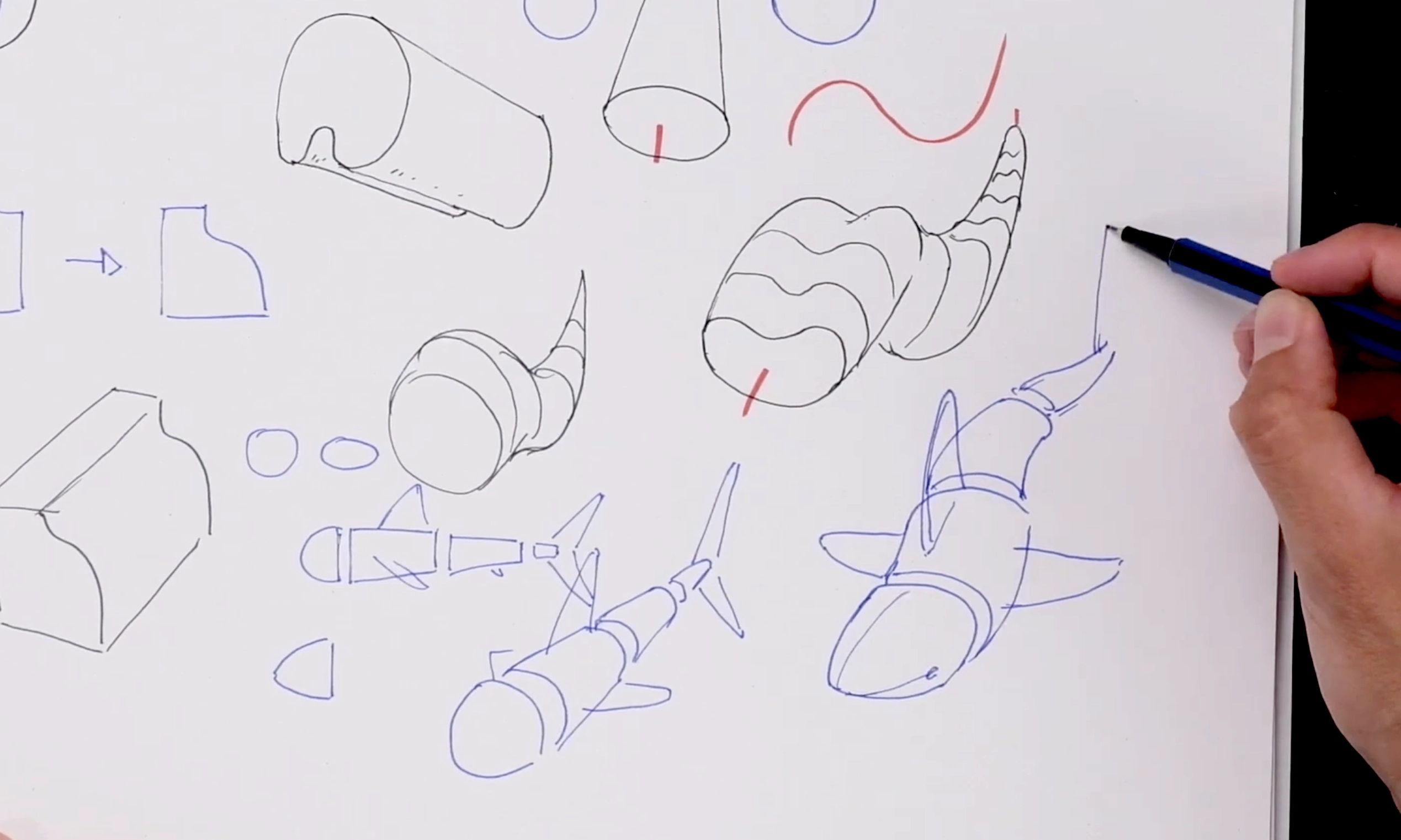
Manipulation of form is a unique Artwod formula that makes learning how to draw so much easier.
Now that you’re seeing the world in simple shapes (welcome to the matrix), it’s time to mess with them. Manipulation is about bending, twisting, stretching, and otherwise modifying those humble shapes to create something more dynamic.
Imagine you’ve got a ball of clay in your hands. Sure, it’s a sphere right now, but what if you squish it? Stretch it? Twist it into something bizarre? That’s the essence of this step. Take that boring box and make it a box with a personality. Turn that cylinder into a tree trunk or… a monster’s leg.
The key here is to push your limits. Ask yourself: How weird can I get while still keeping the core shape recognizable? It’s like giving your basic shapes a little attitude adjustment.
Step 3: Observation
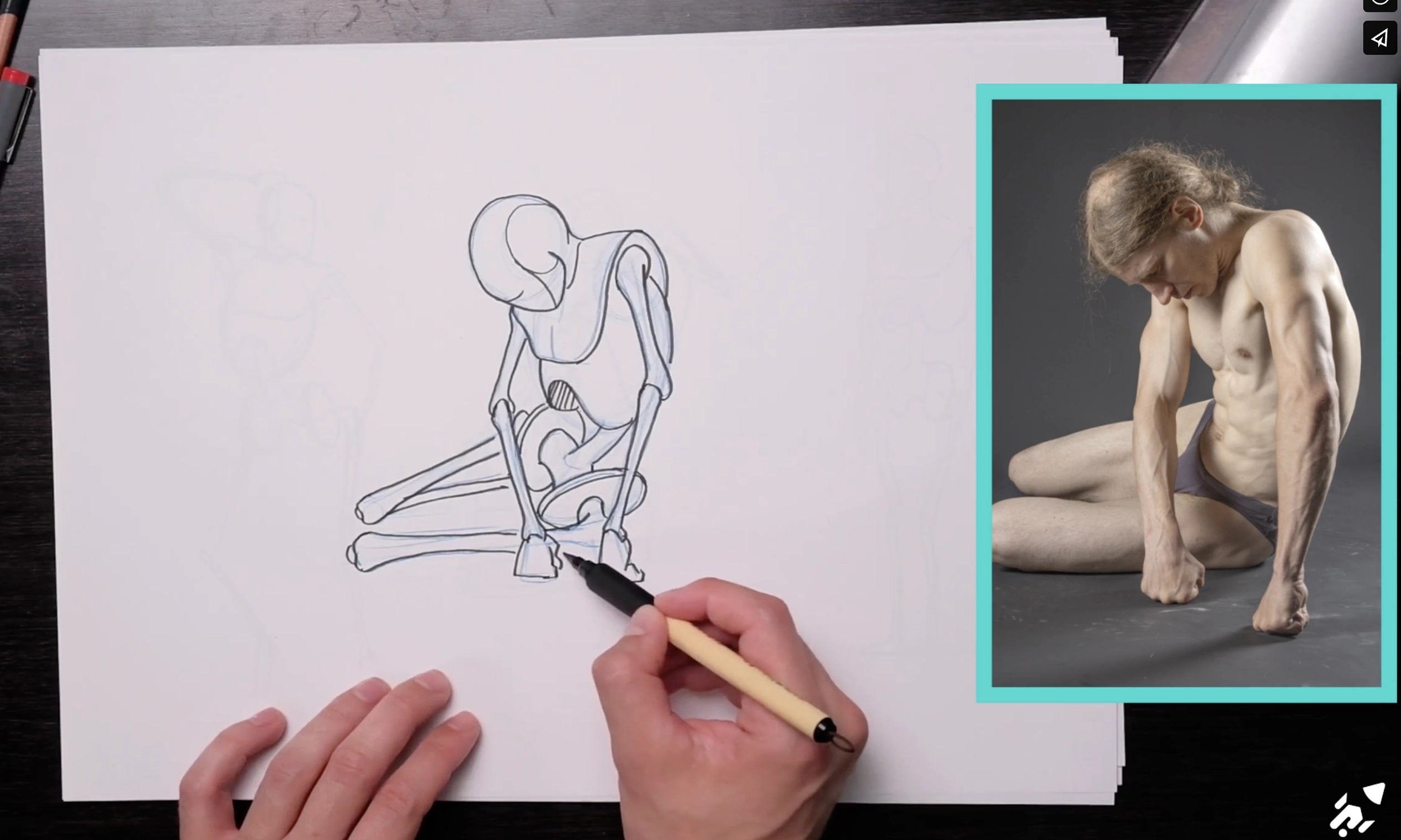
Drawing from observation with simple form
So, you’ve got your shapes and you’re twisting them into new forms. Now comes the part where you start stealing—er, I mean studying—from real life. Observation is about looking at the world and breaking it down into the shapes and manipulations you’ve been practicing.
Take a chair, for example. It’s just a collection of boxes and cylinders… until you notice that one leg is a little wonky. That’s where life happens—in the imperfections. By observing and analyzing the world, you’ll start seeing objects as a playful jigsaw puzzle of shapes waiting to be drawn.
Pro tip: Start small. Pick something simple, like a mug or an apple, and work your way up to more complex objects. Before you know it, you’ll be analyzing skyscrapers and thinking, “That’s just a bunch of stacked rectangles.”
Step 4: Education
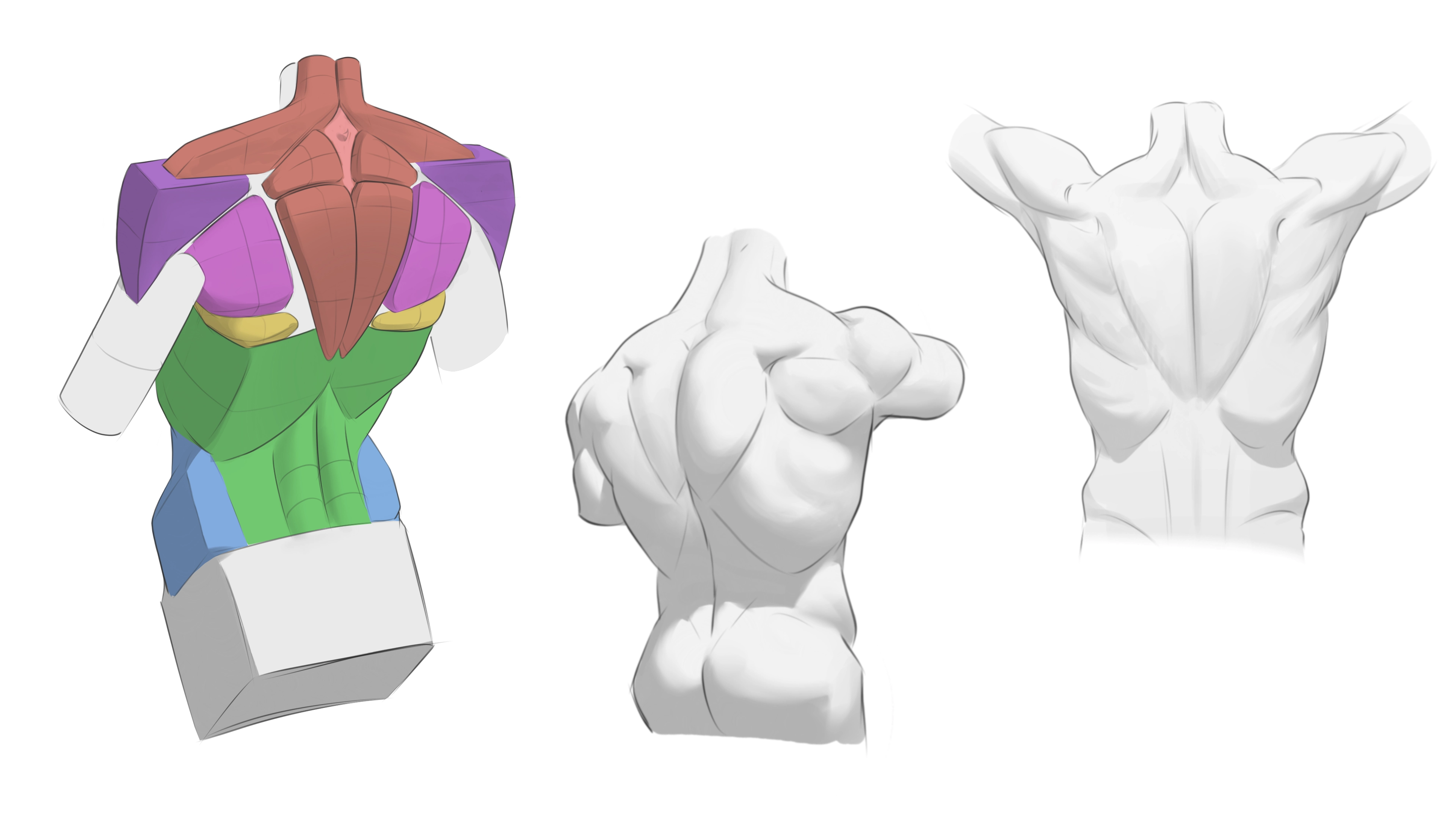
Learning anatomy using simple manipulated form instead of complex latin names!
At this point, you’re a shape-breaking machine. But there’s always more to learn. This step is about diving into specific topics that intrigue you and deepen your understanding of the shapes you’re working with.
Want to draw characters? Time to learn anatomy—because trust me, your human figure is going to look a lot less “blob monster” and a lot more “Michelangelo” when you understand how muscles and bones work. Want to design buildings? Study architecture. Robots? Time to hit the books on mechanics.
This is the stage where you become an artist-detective, piecing together knowledge to make your drawings not just accurate but believable. And let’s face it, knowing how a hip joint works makes you sound way cooler at parties.
Step 5: Imitation
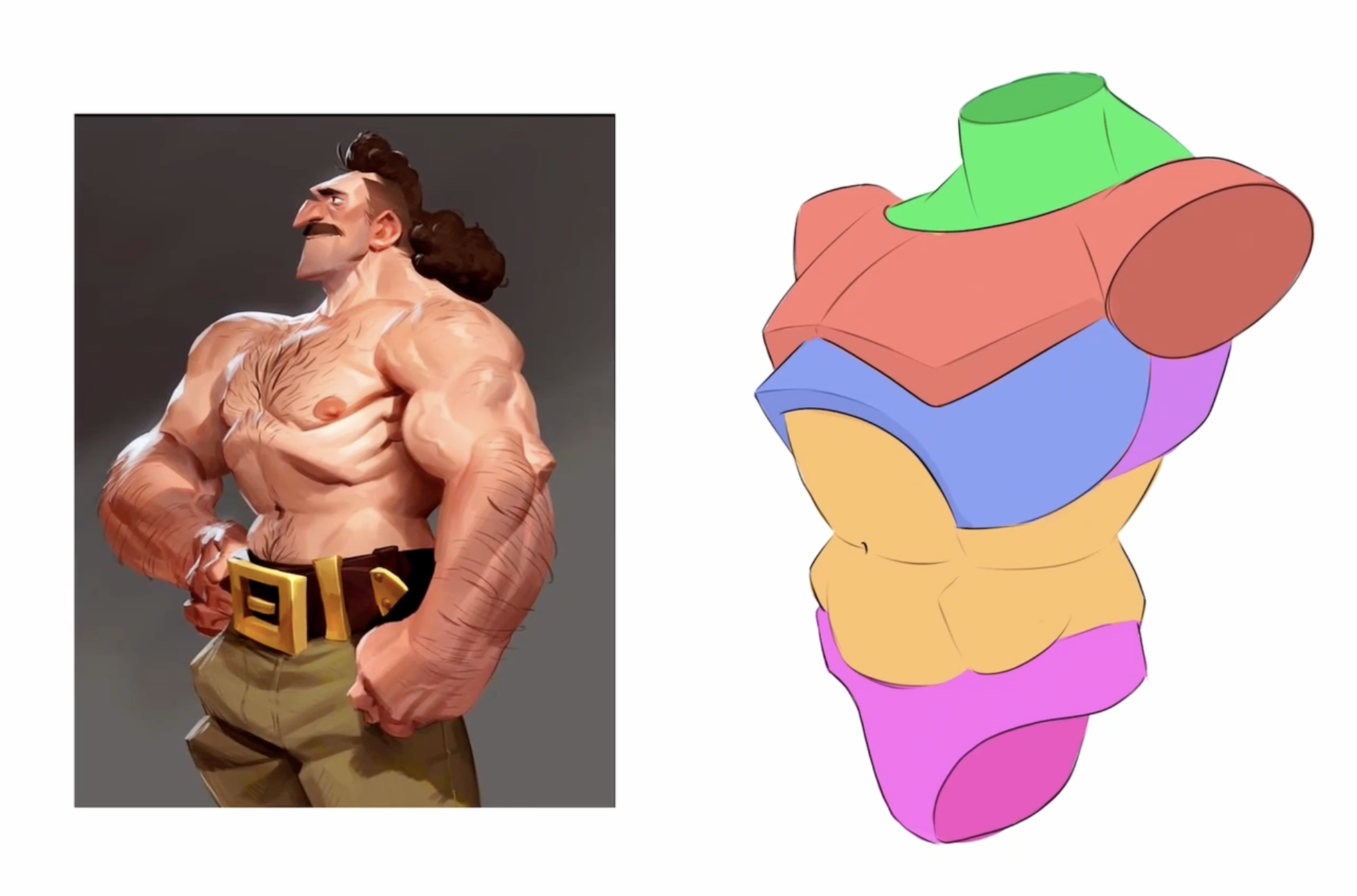
Manipulating forms to emulate our favourite artists is a shortcut to becoming a professional artist in record time.
They say imitation is the sincerest form of flattery, and in art, it’s also one of the best ways to learn. This step is about studying the work of artists you admire. And I don’t mean just copying their drawings (though that’s part of it); I mean dissecting their style.
How do they use shapes? What makes their lines so dynamic? Why does their shading make you want to cry tears of joy? By imitating their techniques, you’ll start to absorb their knowledge and, over time, develop your own unique approach.
Don’t worry about being an art clone. Think of it like cooking: You’re borrowing their recipe to create your own signature dish. And hey, every artist you love probably did the same thing.
Step 6: Imagination
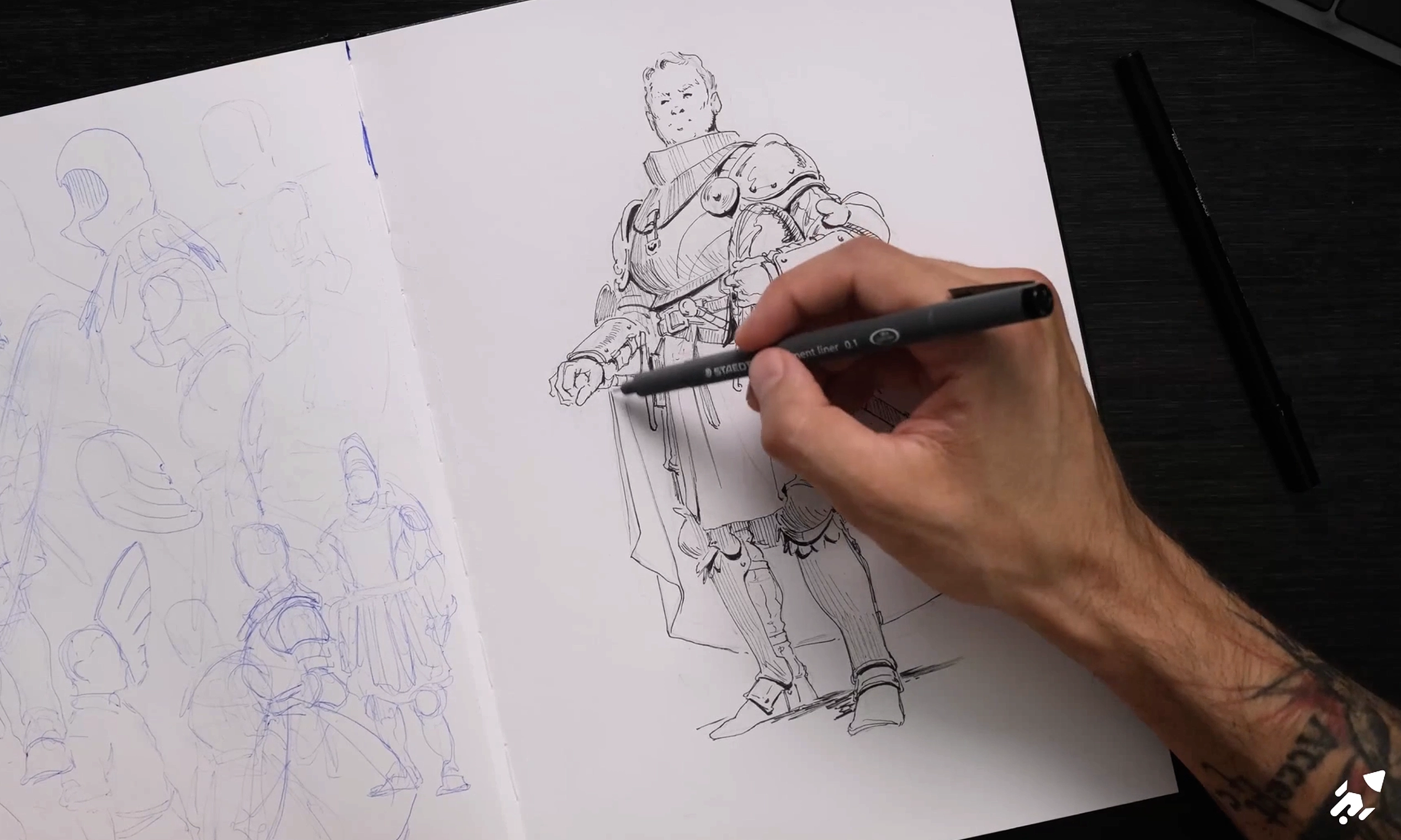
Drawing from imagination becomes easy with these 6 steps.
Here we are—the final boss. Imagination is where you take everything you’ve learned and unleash it on the page. This is the step where you get to be the architect of your own artistic worlds.
Want to design a city in the clouds? Pull from those boxes and cylinders you mastered in Step 1. Need to create an alien creature? Twist and bend your shapes from Step 2, add details from your observations, and sprinkle in some inspiration from your favorite artists.
At this stage, you’re not just drawing what you see or copying someone else’s work. You’re creating something entirely your own—and that’s the magic of art. The best part? Your imagination is like a muscle, and the more you use it, the stronger it gets.
So grab your pencil, and let’s get drawing. The world (real and imaginary) is waiting for you to bring it to life!

